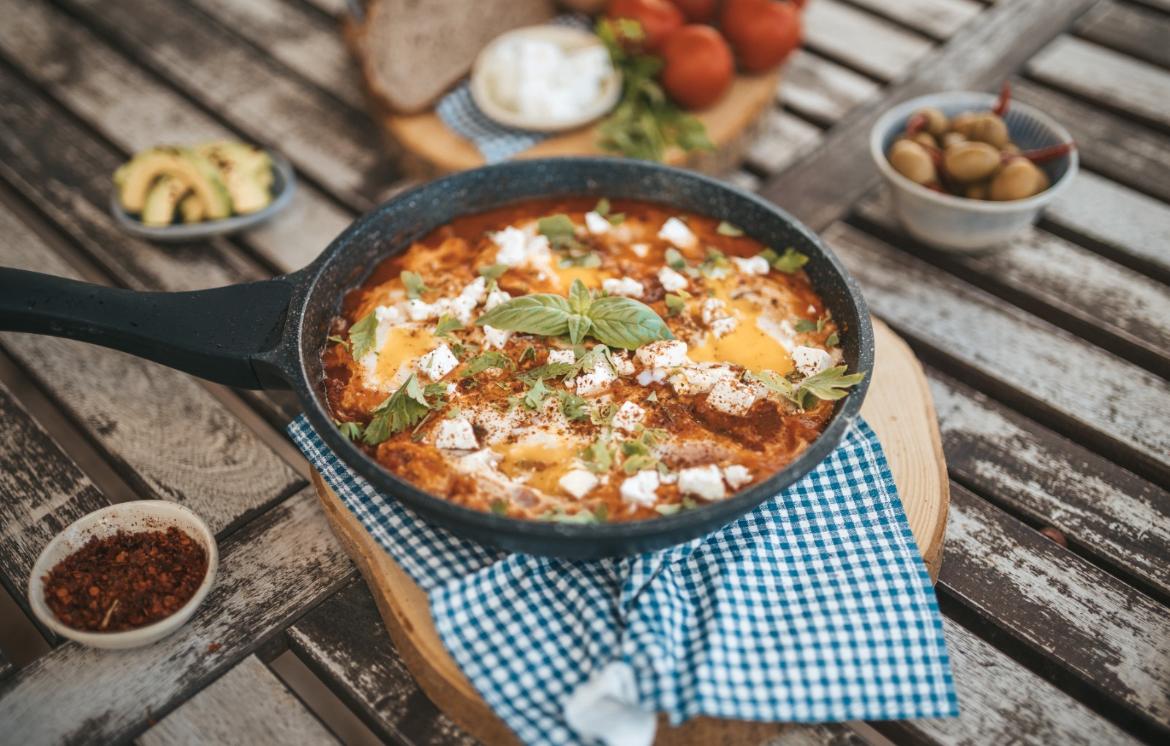Homemade Bread with an Israeli Twist Recipe
Published April 28, 2025

Bread is an absolute essential in many cultures throughout history all around the world. This is especially true of Biblical times as bread is mentioned several times throughout the Bible. There are numerous mentions from when God provided the 'Manna' from Heaven for the Israelites in the wilderness to in the New Testament the disciples sharing bread with each other was integral to their fellowship. There are countless more Biblical examples we could go through but we bet you’re already hungry by now!
Prior to us heading over to bake the bread let's give a little background.
Bread’s role in religious rituals, from blessings to holiday observances, underscores its significance as a central element in daily life and spiritual practice, making it a cherished part of both historical and contemporary Christianity and Jewish identity.
Bread holds profound significance in both Christianity and Judaism, symbolizing divine provision and spiritual sustenance. In Christianity, bread is central to the Eucharist, where it represents the body of Jesus Christ, commemorating His sacrifice and spiritual nourishment (John 6:35). This sacrament is a cornerstone of Christian worship, emphasizing Jesus as the "Bread of Life."
In the Jewish culture, bread, particularly challah, is integral to rituals such as Shabbat, symbolizing rest and God's provision, as well as recalling the divine manna that sustained the Israelites in the wilderness (Exodus 16:4).
Now let's get to the kitchen: This simple recipe takes very little prep time and is perfect for sharing with family, friends, and church family. The recipe includes the delicious and classic Israeli spice which also has a Biblical mention as hyssop is mentioned throughout the Bible. We hope you enjoy this bread with an Israeli twist!
In this recipe, we bring a classic twist to homemade bread by infusing it with Israeli flavors, specifically za’atar, a blend of herbs and spices with deep roots in the Bible. Za’atar is not only a modern culinary favorite but also has historical significance, with hyssop—one of the key ingredients in za’atar—being mentioned in the scriptures. This simple yet flavorful bread is perfect for sharing with family, friends, or your church community.
Ingredients:
- 3 cups flour
- 2 tbsp za’atar
- 1 tsp yeast
- 1 1/2 cups lukewarm water
Instructions:
Mix Dry Ingredients: In a bowl, combine the flour, za’atar, and yeast. Gradually add the lukewarm water, stirring until the mixture forms a dough consistency. No need to knead—just mix until well combined.
Let Dough Rise: Cover the bowl with a tea towel and let the dough rise in a warm place for 3 hours. The dough should double in size.
Shape the Dough: Once risen, shape the dough into a round loaf. To avoid adding extra flour to the dough, use olive oil on your hands. This also adds a delightful crunch to the crust.
Prepare for Baking: Place the shaped dough on a baking pan and let it sit for an additional hour. This helps the bread develop its texture and rise.
Score and Bake: Before placing the dough in the oven, use a knife to score the top. Bake at 450°F (230°C) until the bread is golden brown and sounds hollow when tapped, about 25-30 minutes.
Cool and Serve: Let the bread cool for 5 minutes before slicing. Serve warm and enjoy the delightful blend of flavors with a touch of Israeli tradition.
In conclusion, bread is much more than a staple food; it is a profound symbol of faith, tradition, and community in both Christianity and Judaism. Its significance extends beyond mere sustenance, embodying spiritual nourishment and divine provision. This delicious bread can be enjoyed in a sacred ceremony or shared at a family meal and continues to be a cherished symbol that brings people together and enriches their spiritual and communal lives.








